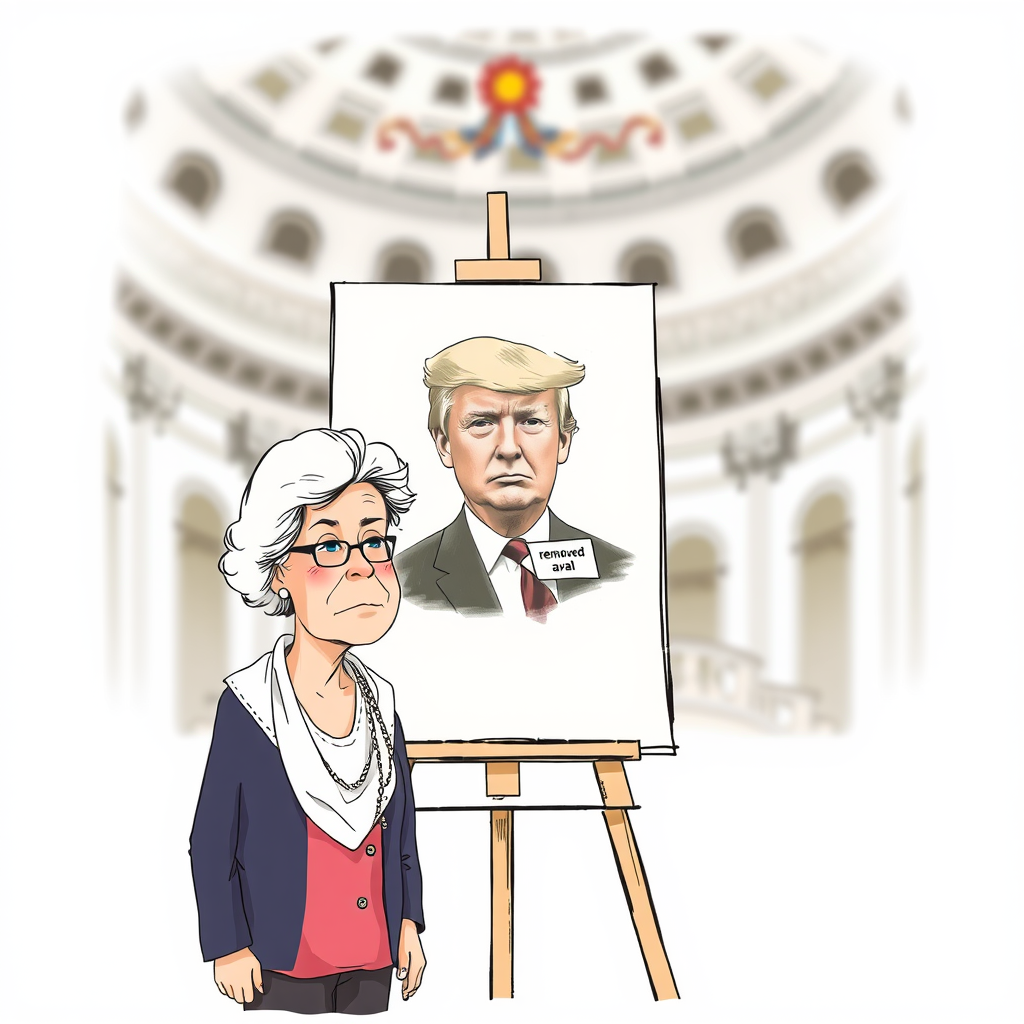Trump Slams Portrait, Artist Says Business Hurt

Colorado’s state capitol building removed its official portrait of former President Donald Trump last month following his public criticism of the artwork, a move that has now impacted the artist’s livelihood. Trump claimed the painting was “purposefully distorted” and significantly less flattering than the portrait of former President Barack Obama, also painted by the same artist. He labeled his own portrait “truly the worst” and called for its removal, even suggesting the artist, Sarah Boardman, had diminished in skill.
Boardman, a 78-year-old British-born artist, has responded to Trump’s accusations, firmly denying any intentional bias or distortion in her work. In a statement posted on her website, she asserts the portrait was completed “accurately, without ‘purposeful distortion,’ political bias, or any attempt to caricature the subject.”
The Colorado legislature, controlled by Democrats, swiftly acted on Trump’s complaint, removing the painting from display in the capitol’s rotunda – where it had hung since 2019 – and placing it in storage.
Boardman states that for the six years the portrait was displayed, she received overwhelmingly positive feedback. However, she claims Trump’s recent comments have had a demonstrably negative impact on her business of over four decades. She emphasizes her right to free speech, while also highlighting the damaging consequences of what she views as unfounded allegations.
Boardman has also painted portraits of former Presidents George W. Bush and Barack Obama. This situation underscores a concerning trend: the increasing politicization of art and the potential for public figures to leverage their influence in ways that directly affect the livelihoods of artists. While criticism is a natural part of the artistic process, Trump’s comments appear to have crossed a line, moving beyond critique into potentially damaging accusations that have real-world consequences for Boardman’s professional life. It raises questions about the responsibility of public figures when commenting on artistic work and the potential for such comments to be interpreted as attacks on an artist’s integrity and skill.